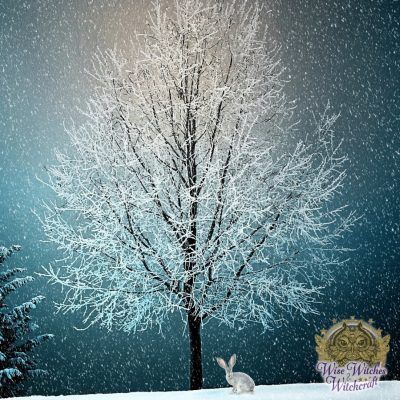Yule – A Concise Guide to Winter Solstice Astrology, Rituals, Recipes, & More
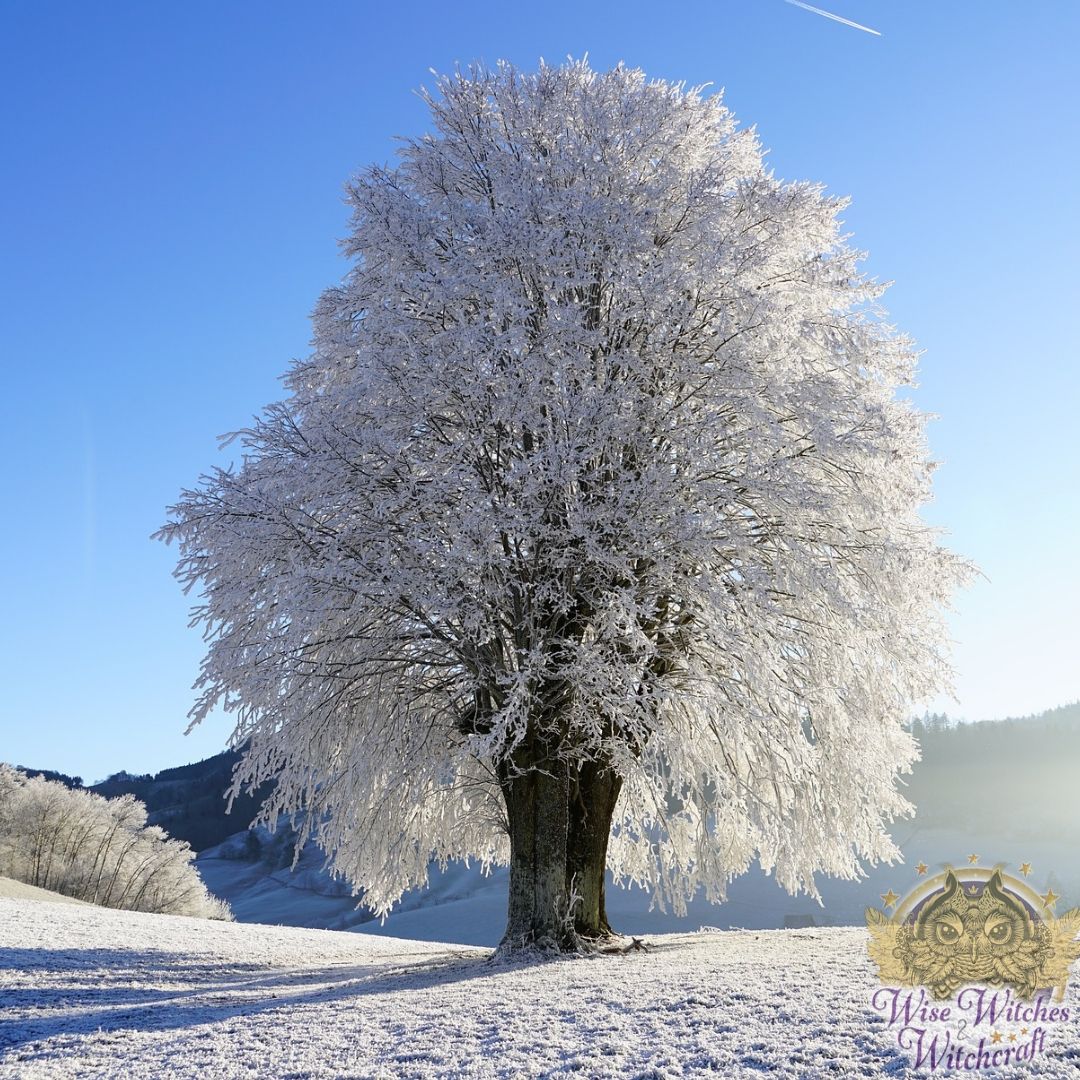
“This shortest day,
As promise wakens in the sleeping land:
They carol, feast, give thanks,
And dearly love their friends,
And hope for peace.
And so do we, here, now,
This year and every year.
Welcome Yule!”
– Susan Cooper
When is Yule & Winter Solstice
The Wheel of the Year is ever-turning. Yule is the time when the dreary darkness begins to give way to light. From this point forward there will be more and more daylight kissing the earth.
Other Names for Yule: Midwinter, Yule, The Longest Night, Winter Solstice, Yuletide
Dates: December 20 to December 23 Northern Hemisphere; June 20th – 22nd Southern Hemisphere
What is Yule, Yuletide, & Winter Solstice
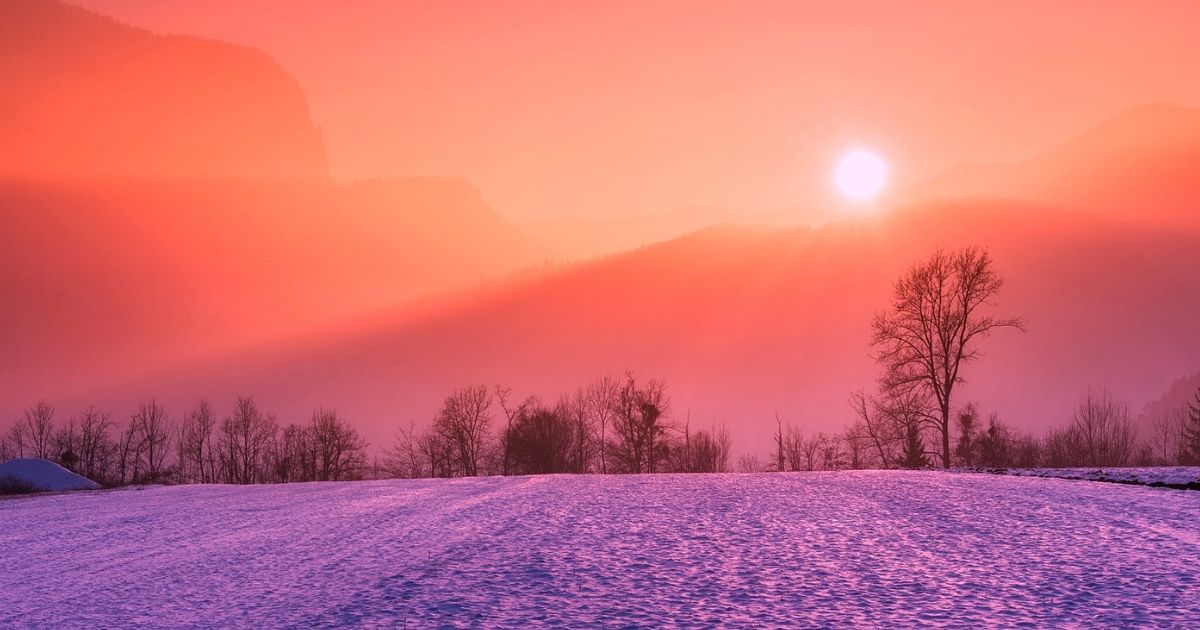
Winter Solstice occurs when the Earth’s pole is at the maximum tilt from the sun. For those in the Northern Hemisphere, this corresponds with Yule celebrations. Holiday celebrations also take place in the Southern Hemisphere, but their actual Winter Solstice doesn’t happen until June.
For the Ancients, observing the cycles of nature and Astronomical events helped in timing things like sowing crops and mating their farm animals. More importantly, it helped them with conserving food since the greatest amount of starvation took place in January and February. So Midwinter’s feast was the last celebration before entering the famine months. The cattle were slaughtered, and whatever could be preserved was neatly put away. Nonetheless, Yule was met with merriment.
Just for clarity, Yuletide refers to the entire celebratory season vs. Yule which is a specified day.
The Reborn Sun
People knew that the sun was beginning to stay in the sky just a little bit longer every day. This created a common myth about the Sun God being reborn. Exactly how they honored this day depended much upon the culture. The Iranian tradition was that of gathering in the house of the eldest family member. Here they would eat, drink and read poems. One of the favorite poets is Hafez, who was a bit of a partier. He wrote, “Even After All this time The Sun never says to the Earth, “You owe me.” Look What happens With a love like that, It lights the whole sky.”
The Romans celebrated Saturnalia. Houses were decorated with evergreens, and no business took place. As the name implies, this holiday was dedicated to Saturn and actually took place over a whole week. During the 7-day event, there were parties, gambling, gift exchanges, and public banquets.
Germanic and Scandinavians had a 12-day Midwinter event (Jul). Many of the traditions we see at Christmas come from this region including the tree, Yule Log, and wreaths. Various offerings to the Gods were also common, hoping for blessings in crop growth. Some of the Pagan Gods and heroes honored this day include Mithra, Dionysus, Odin, Perseus, and Horus.
Yule & Winter Solstice Symbolism and Lore
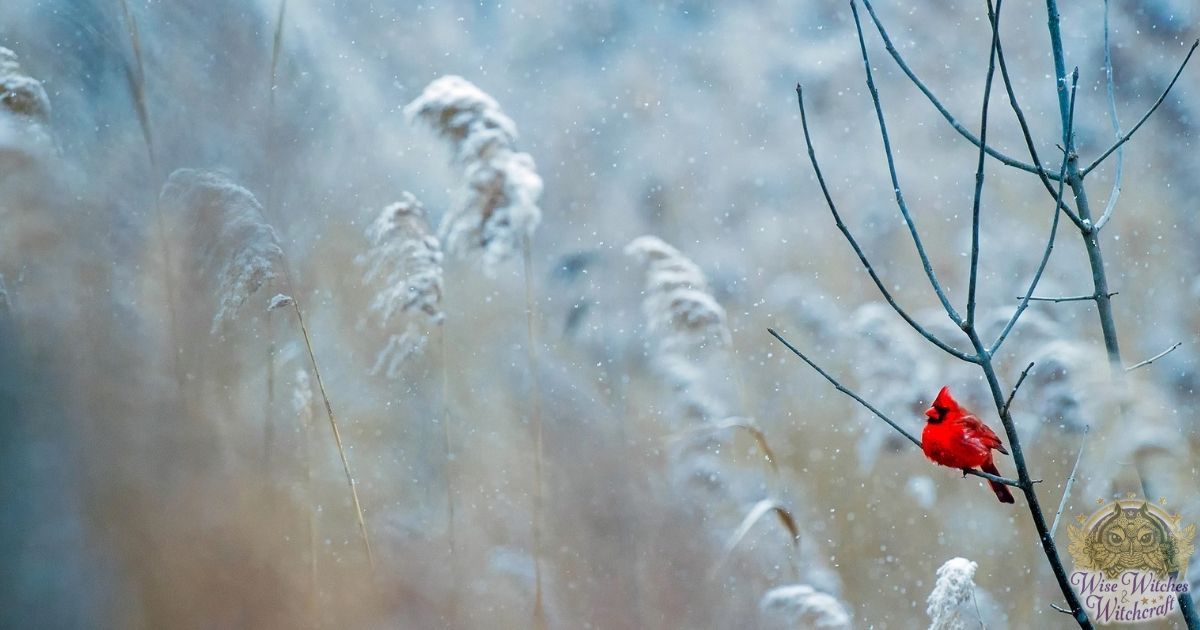
Celts held the evergreen in high regard because they, unlike other trees, did not die in winter. So bringing the bows into the home represented long life. Apples and oranges filling baskets symbolized the sun. Wheat stalks reflected the harvest, again representing life. Of course, the family welcomed woodland Sprites into the home by hanging holly and ivy on the doors, neatly “decking the halls.”
For the Druids, the longest night of the year was quite the sacred moment in which they harvested Mistletoe from an Oak tree. In Celtic beliefs, the Oak represented the chieftain. It was the king of the forest and associated with endurance and strength. Meanwhile, the lovely mistletoe was feminine, so the two together became an emblem of love. Kissing under the mistletoe during the Yule observances protected a union and blessed it.
The Yule Log began in Norse tradition. This “log” was really a whole tree. The large end of the tree went into hearth first sitting on the remains of the log from the previous year. Over 12 days, it was fed into the fire. Whatever remained was carefully stored away for the next year. In places like Holland, that remnant was tucked under the bed. This 12-day ritual eventually transformed into the 12 days of Christmas. In either case, the Yule log fires became an emblem of the Solstice itself, and a charm that evoked luck.
The Lore of the Holly King and Oak King
There is a common story about Yule that begins on Solstice night. The Oak King (the Sun) and the Holly King (Winter and Death) fight through the darkness. By morning the Oak King emerges victorious. He will remain on his throne until Summer Solstice (Litha). It is worthy of note that artistic depictions of the Holly King have him dressed in red, wearing holly in his hair and driving 8 stags – Santa Clause, anyone? It wasn’t until early Christians took over Pagan holidays that Santa Clause became associated with St. Nicholas.
Yule Astrology – Northern Hemisphere
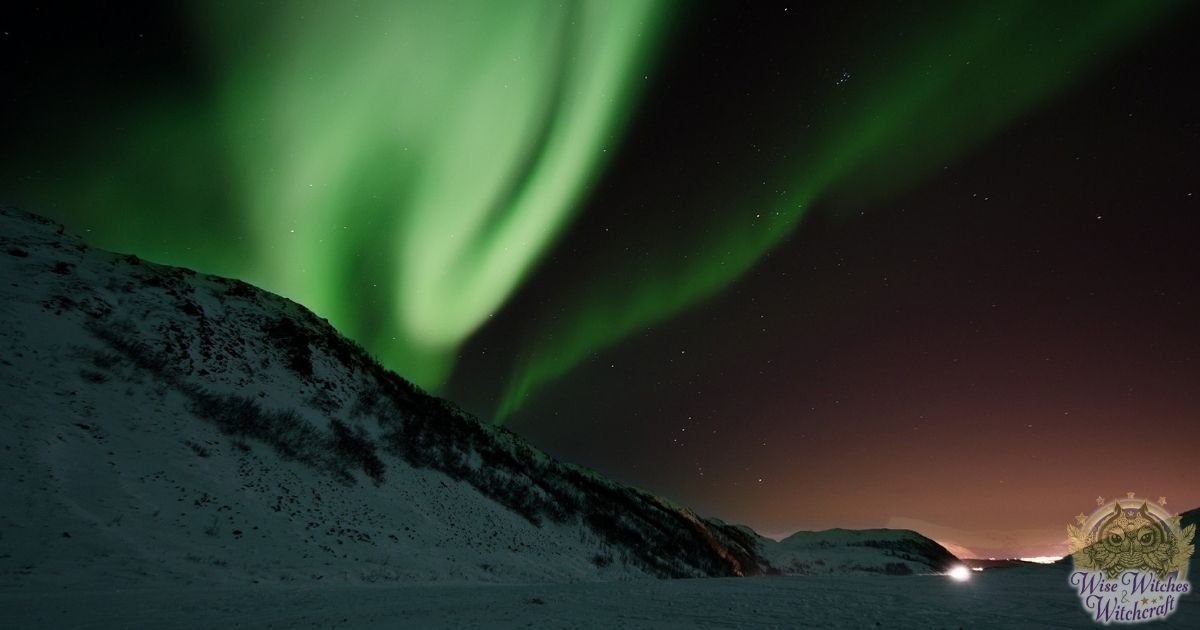
Yule begins in the Sign of Sagittarius, which is ruled by Jupiter. The Sagittarian personality is perfect for the ho-ho-holidays being upbeat and filled with energy. People born under this sign are the ambitious, independent, multi-tasking adventurers of the Zodiac. Wherever there is a gathering of friends, you will find the Sagittarian there with bells on. Better still, you can always trust the archer for honesty. They can be a little brusk with it, so don’t ask for their opinion unless you want it in spades.
Capricorn the Goat comes galloping in on December 22nd. Capricorn is a dreamer. She is a bit like a bear in that hibernating at this time of year is exactly what’s preferred. Like a blanket of silent snow, Capricorn has a sense of inner stillness. Those born under this sign pay close attention to commitments, business and keeping promises. Capricorn is ruled by Saturn, giving the Goat the ability to look at things from a variety of perspectives before making choices.
Yule & Winter Solstice Astrology – Southern Hemisphere
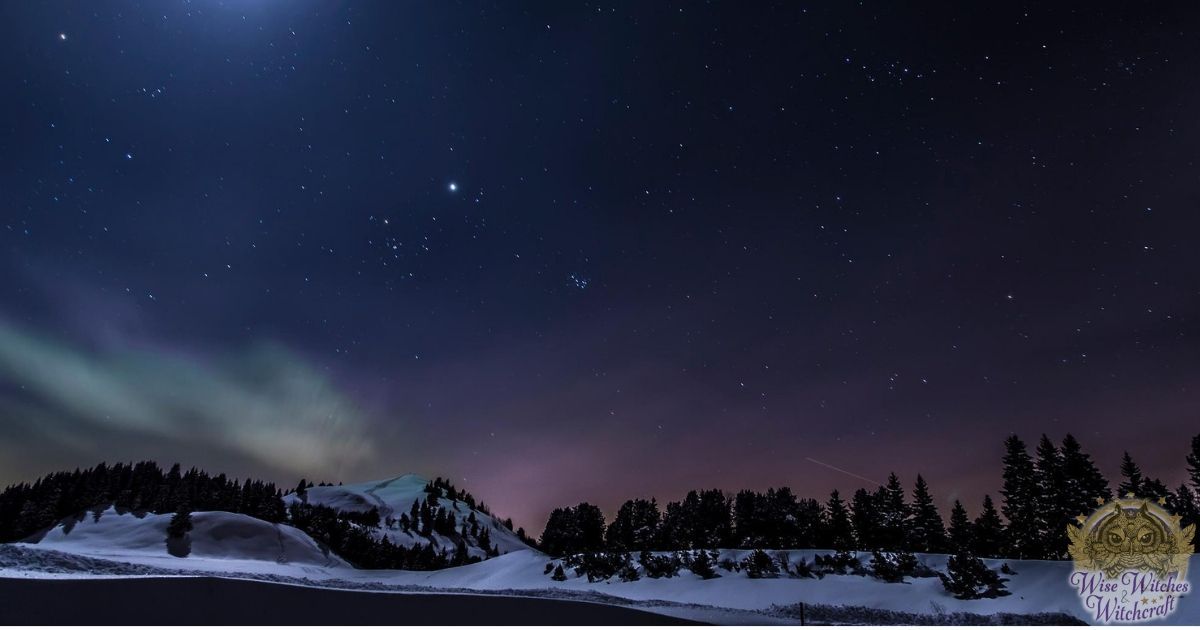
Winter Solstice for those in the Southern Hemisphere begins on June 20, when Gemini is coming to a close. The twins are ruled by Mercury, meaning these people can talk, and talk, and talk. The ability to communicate with humor and intelligence is one of Gemini’s greatest assets in life. The difficulty for those who love a Gemini is simply keeping up with them. They go from adventurous to hermetic, from laughter to tears in the blink of an eye.
On the 21st we enter Cancer, which is ruled by the Moon. This makes Cancer as emotional as Gemini. Those born under this sign are often psychic and traditionally a home-body. Cancer does not like feeling vulnerable – that is when they pinch. Most Crabs are good with money, stay close to their families and nurture everyone around them with a mothering spirit.
Yule & Winter Solstice Element
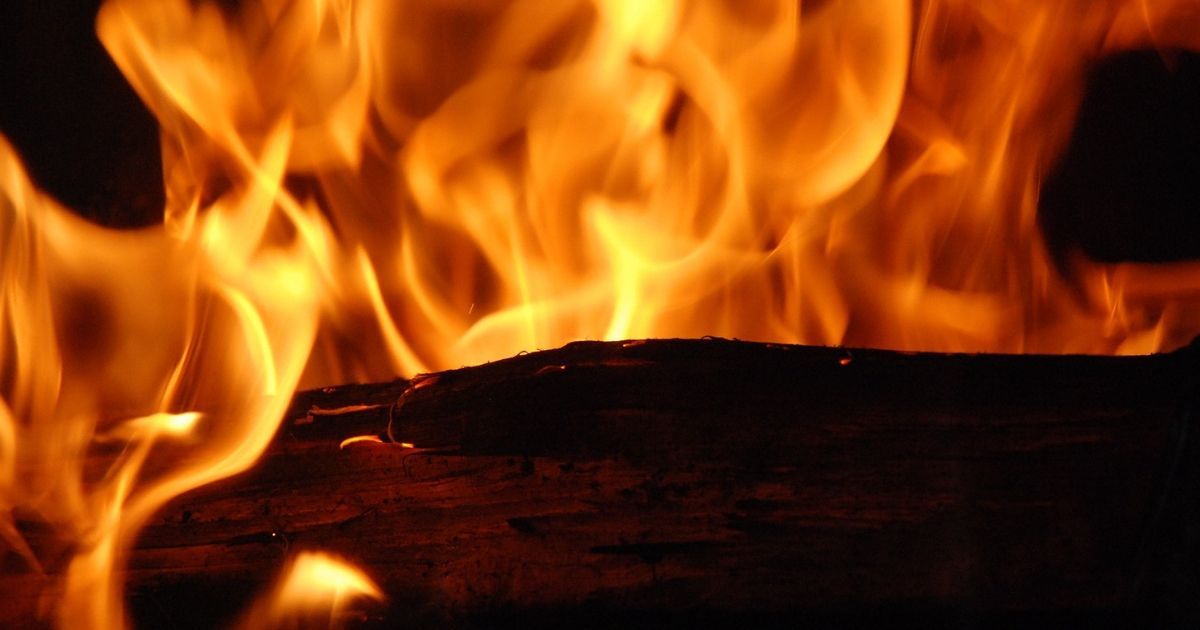
Yule celebrates the Sun so it aligns with the Element of Fire. Similar to Midsummer, the Fire Element evidences itself in overtones of fertility and life’s continuance. From the perspective of the Three-Fold Goddess, this is the Crone who calls to the Sun from the darkness. Then the Sun-lover returns to her, warming the earth and restoring the glorious light.
Yule & Winter Solstice Crystals, Minerals and Sacred Stones
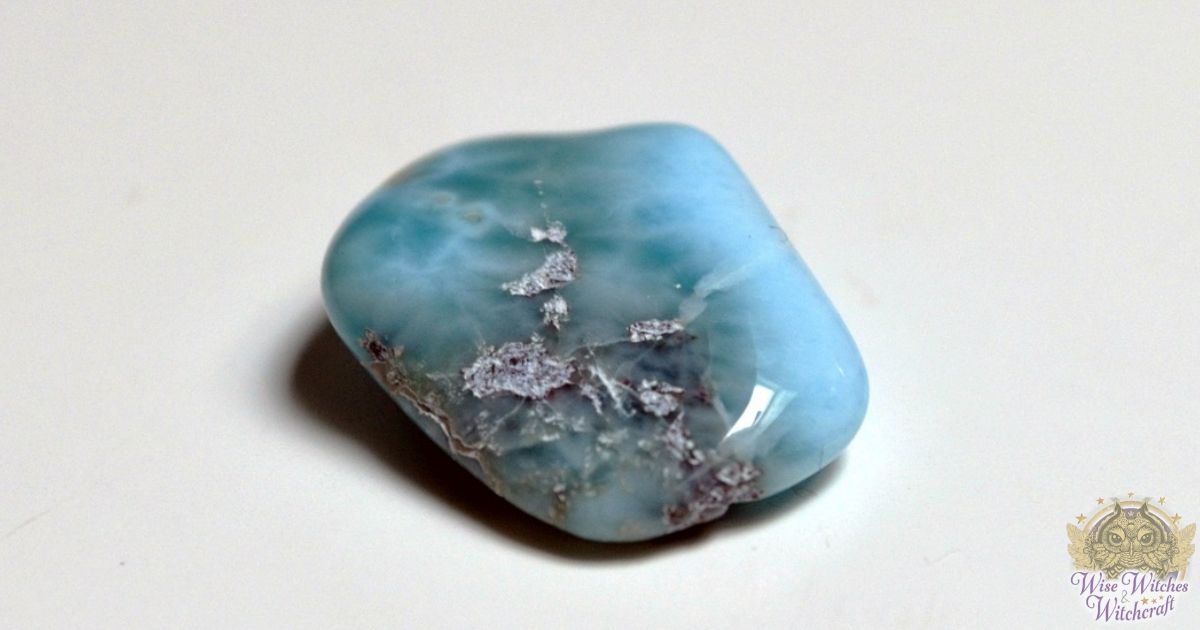
Look to the color symbolism of the season – gold, green, red and silver/white including:
- Aventurine (green): Aventurine inspires creativity and energy. Use it as a charm when putting up your Yule altar or decorating the house.
- Bloodstone: The red of the Bloodstone brings health, organization, and revitalization, all of which come in handy when things get hectic.
- Chrysoprase: The &Yule gift from Chrysoprase is decreasing the anxiety and stress that often accompanies the holiday season.
- Clear Quartz (clear or milky): Quarts is a universal go-to stone. Here it appears a bit like icicles dotting the Yule altar.
- Cryolite: This high-vibration stone puts us in touch not only with our higher self but also the Divine. It resonates with your Heart and Crown Chakra. Carry this in a power pouch to get the New Year off right.
- Fire Agate: Agates in general are happy stones and awesome for safeguarding the children of your tribe who are filling our houses for parties.
- Fluorite (green): Green Fluorite supports our mental-keenness, concentration and overall perspective. This is a good stone to bring to work so you can focus on the tasks at hand instead of being distracted by other Yule considerations.
- Garnet (red): When we think of good cheer, Red Garnet supplies. It also offers us positive energy and protection in our travels to see family and friends.
- Hematite: Yule includes various fortunetelling activities including divining by salt, nuts, candles and tokens hidden in the plum pudding. Hematite provides grounding and centering for these efforts.
- Larimar: If there is too much going on and you want to catch your breath, use Larimar. The key word for this stone is calmness. It also supports your Throat Chakra and Heart Chakra so you can keep your communication filled with love.
- Malachite: Malachite is another good stone to take on the road with you. It attracts money (which comes in handy) and generally keeps your mood light-hearted.
- Moonstone: The shimmer of Moonstone looks like light reflecting off ice or snow. It’s a lucky stone and one filled with hope, joy and the wonder of new beginnings in the New Year.
Yule & Winter Solstice Herbs and Plants
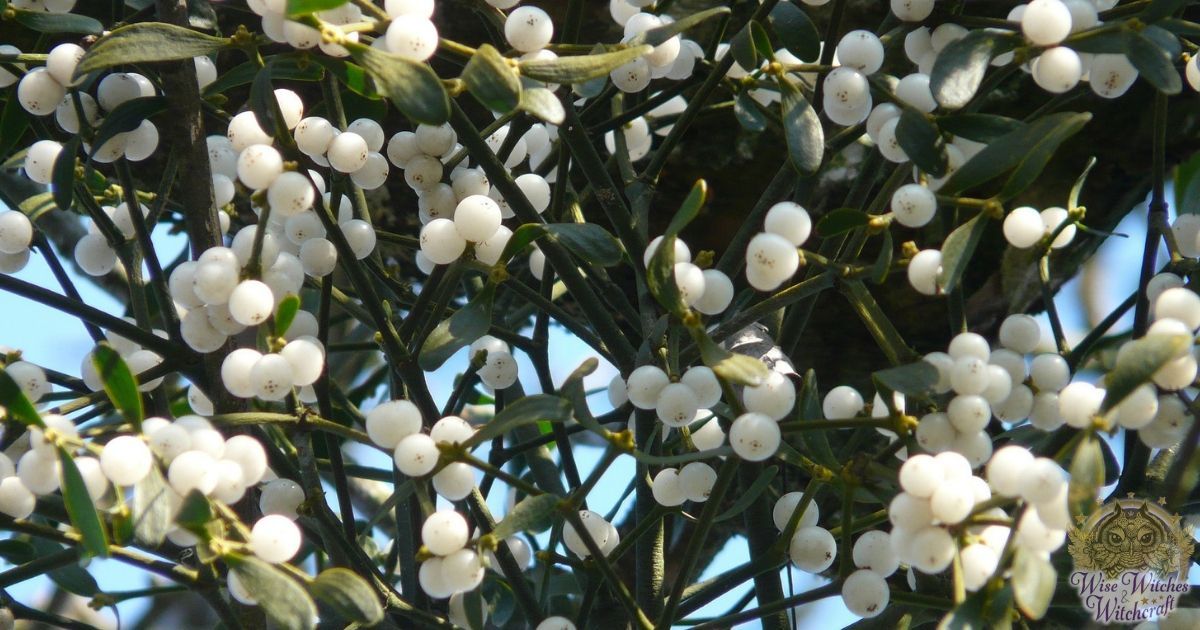
Add these as decorations on your altar or in incense:
- Bay: Bay is a wishing herb. Have your company write wishes on them, and then burn them in a cauldron for manifestation.
- Bayberry: Burn a green candle dressed with Bayberry when you need a little extra luck or quick cash to cover holiday expenditures.
- Cinnamon: An excellent addition to sachets for protection, awareness and success. Keep your eyes open for a special gift that supports one of your goals.
- Frankincense: Frankincense combines well with topaz for improved self-control so you don’t over-indulge this season.
- Ginger: If you are feeling a little antsy about that next party with a lot of new people, drink a little magically-infused ginger tea. This opens you to new experiences and provides confidence.
- Juniper: The last thing you want during Yule is a winter cold. Burn juniper incense for overall healthy energy.
- Nutmeg: Also known by the rather lovely name Myristica, Nutmeg offers protection. The bustle of Yule brings a lot of random energy. Keep a whole nutmeg as an amulet directing those away from you.
- Pine: Ah, the smell of a Yule tree. Pine symbolizes cleansing, a fresh start, and personal growth. Use this for blessing your home during the Yule ritual.
- Sage: For some, the holidays bring somber memories. Sage is a herb that helps us handle grief and sadness.
Yule & Winter Solstice Foods, Beverages, & Recipes
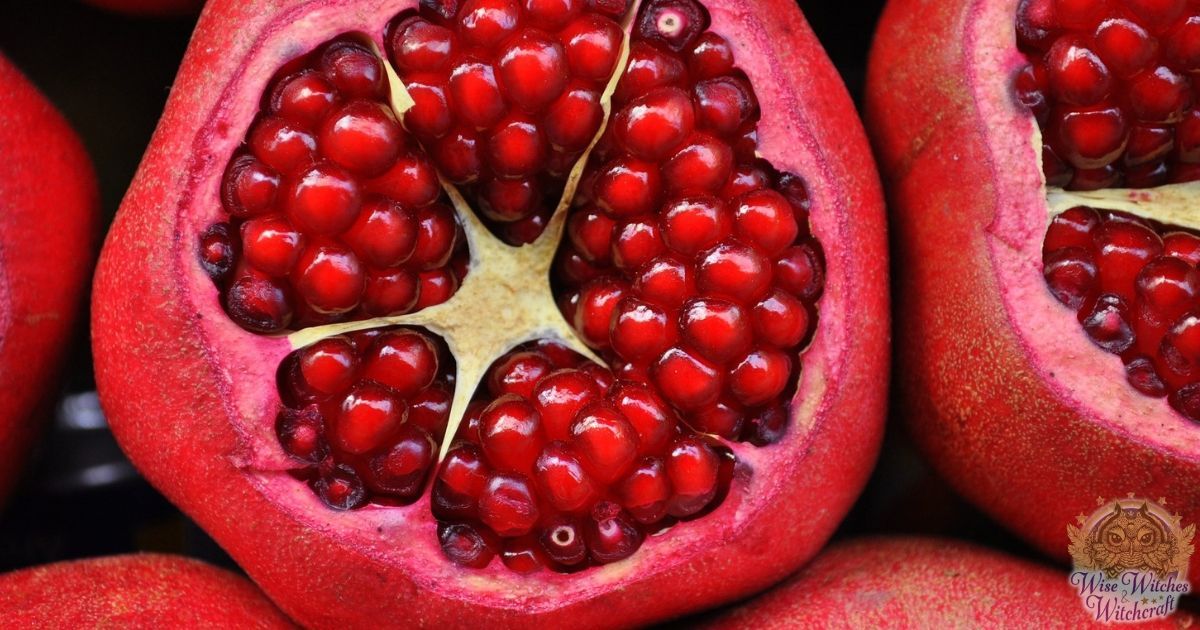
What is Yule without a feast suited for a Kitchen Witch?
- Ale: In Norway it was customary to bring Ale to the temple during Yule and toast Odin. Other toasts were for the ancestors. Right after the holiday, a new batch of beer started brewing for honoring the Old Gods on the following Winter Solstice.
- Apples (often roasted or in dessert): Overall Apples represent healing, peace and the Earth Element. Their symbolism ties to that of Cider.
- Cider (hot, spiced): Cider was a primary ingredient in a traditional Winter Solstice drink called Wassail. Wassail literally translates as “be well.” Cider combines with honey and Yule spices like cinnamon and clove. The first bit would be offered in the woods to the apple trees so they would bear plentiful fruit in the coming season.
- Cookies: Extravagant feast during the Middle Ages were a common occurrence during the Winter Holiday. People became excited by the rich spices coming into the region by merchants. Pastry now had those exotic herbs added to them along with sugar. The round shape represents the sun. And, of course, for our children, we need a few for Santa.
- Eggnog: Eggnog had its roots as a winter beverage for British aristocracy, giving it associations with wealth and power. Originally liquors like sherry were preservatives. In the New World this became rum.
- Fruit (dry like apricot): Fruit was gathered and dried for the harsh winter in northern climes. Each one has slightly different energies associated with it. Apricots, for example, represent the Sacred Feminine, and charge-up our romantic inclinations. Dates were sacred in Greece and Babylon, sometimes used as offerings. They are the fruit of longevity and fertility. Figs came from the Mediterranean where they were part of consecration rituals. This is a “God” fruit, filled to overflowing with fecundity. It is no surprise a lot of babies came into the world 9 months after the Solstice.
- Gingerbread: Brought by Crusaders in the 11th century, Gingerbread was only allowed to be made and consumed during the holidays. From a Witch’s perspective, Gingerbread can be made into poppets.
- Nuts: All nuts offer fertility and luck. Cashews are prosperity, Hazelnut grants wisdom. Walnut focuses on mental keenness, and the traditional Chestnut was for love.
- Meats (roasted): Animals were butchered before the harsh weather began. Each type of meat provides a different kind of energy for your meal. Beef grounds us and symbolizes prosperity. Chicken heals, and Deer represents grace and refinement.
- Pears: The Pear Tree in the holiday song,The Twelve Days of Christmas, is sacred to Venus, a love Goddess. One bite and you would immediately feel passion rising in you. They come under the rule of the Air Element.
- Plum: Plums as well as prunes promote constancy in a loving relationship.
- Pomegranate: Pomegranate links us to the story of Persephone and Ceres explaining the changing seasons. It represents the womb, and the red juice was often used for ink that documented magical rituals. Pomegranates are used in wishing spells.
- Root Vegetables: All root vegetables align with the Earth Element. Turnips protect us from unhappy spirits, and carrots resonate with the Sacred Masculine, increasing fertility.
- Wine (mulled): Wine and beer were often far more healthy for our ancient ancestors than local water. Wine was sacred to many Divine beings including Bacchus and Isis. Wine sustains harmony, and it was common in a wide variety of religious rituals including those of the ancient Pagans. Monasteries were the cornerstone of the wine industry. Wine aligns with the Fire Element.
[wisew_rectangle_large align=”right”]
For more delicious holiday feast ideas visit our Pagan & Wiccan recipes section!
Creating a Wiccan / Pagan Winter Solstice & Yule Ritual
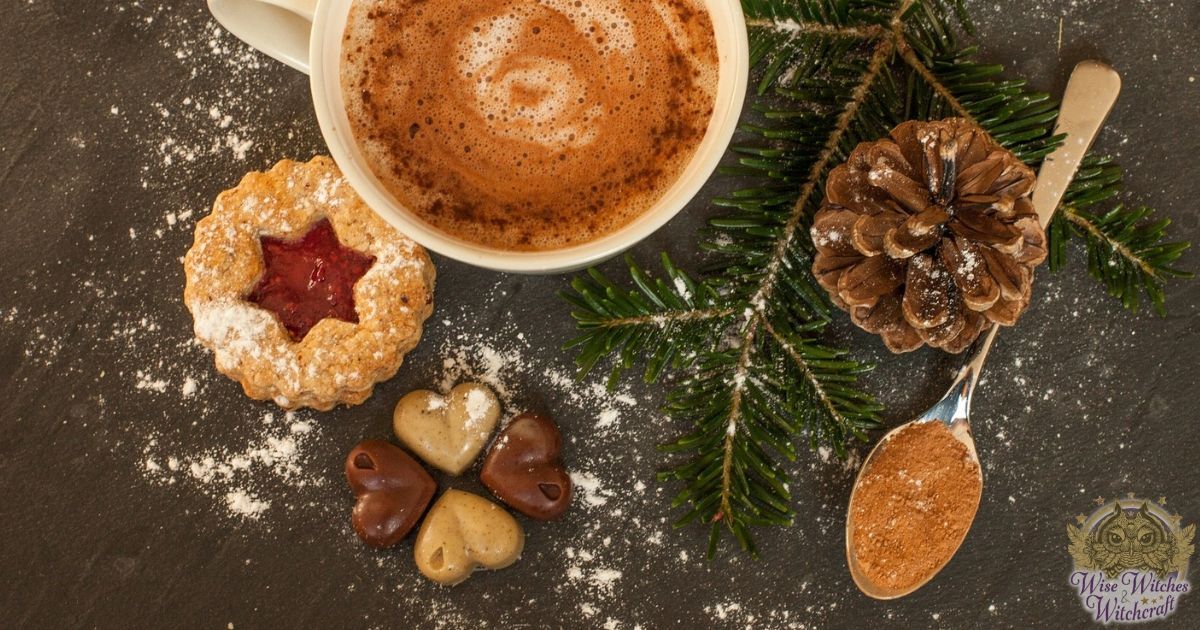
Visualize pine cones hanging from windows as a symbol of rebirth, nuts adorning tables for prosperity, shiny ornaments repelling negativity, and the Yule tree filling the air with the fresh, healthy aroma of pine. This sets the stage for the Winter Solstice on this spoke of the Wheel of the Year. People of many magical persuasions have all manner of plans including holding a special ritual.
The alternative name for this day, Yule, comes from a Gaelic word meaning “wheel,” most likely alluding to the solar wheel turning again. In Wicca, this signals the Crone Goddess stirring in the womb of Earth, bringing hope to winter’s cold. She will be resurrected in spring as a young woman, and dance with the fertile Earth.
Here is an idea that may help you in planning your Yule / Winter Solstice Ritual:
Preparations for the Yule Ritual
If it’s physically feasible, fast, and pray for three days beforehand. This allows you to enter the New Year’s cycle purified in body and spirit. Also consider a ritual bath with cinnamon, mint, and rose petals to improve psychic awareness.
Decorate the sacred space with gold and silver spheres to represent the returning sun, and wreaths to symbolize the turning Wheel. Have oak shavings ready as a base for your incense. Add any other personally meaningful herbs to this mixture and start burning it before the invocation to help prepare the sacred space.
Finally, put your sun candle from earlier in the year at the southern point of the circle.
The Yule & Winter Solstice Altar
Cover the table with a pale green cloth—the color of early sprouts, which represent continuance. Add red berries for life’s blood; holly; ivy; and pine branches as a symbol of longevity. The pine also welcomes sylvan spirits to your circle.
Have a Yule log at the center point, placing there your God and Goddess candles. Always keep part of the candles or the log itself for future years; this brings good luck, life, health, and providence.
Winter Solstice Invocation
[wisew_rectangle_large align=”right”]Light the Goddess candle in the Yule log, then move to the northern point of your circle. This is the quarter traditionally ascribed to the season of winter.
North.
Ancient Mother, I look for your opulence, but tonight naught but barren trees decorate the land. In this restful moment, let my spirit find healing.
East
Ancient Brother, I listen for your winds, but tonight they are still. In this quiet darkness, help me find inspiration.
South
Ancient Father, I look for your fires, but tonight the embers only begin to glow more brightly. May this gentle warmth temper my spirit.
West
Ancient Sister, I seek your glistening tears, but tonight they are frozen. Beneath this cool blanket, let my emotions find stability.
Center
Ancient Ones, I seek your face, but tonight darkness surrounds. Help me find your spark within to guide my path.
Meditation and Visualization
Winter Solstice is an excellent time to undergo a vision quest to find your magical name, a totem animal, a mantra, or other empowering insights. This meditation is meant to accent that quest by opening your awareness to the power within and without all things.
Begin in a standing position. Center yourself and breathe deeply. Slowly take off your mundane clothes, likewise removing the “world” with each. Wrap a blanket around yourself for warmth but remain naked for the meditation. You need no trappings to discover personal power.
Sit now and close your eyes. Let any remaining tension drain away, then begin listening to the sound of silence. Smell the aromas of oak and herb. Feel the latent energy of everything around you and the magic you’ve placed there. Know it as your own.
Listen to your breath and your heartbeat. Sense the pulse and ebb within as the same energy without. Listen closely; does it whisper a message to you? Does it whisper a name? Do you hear the cry of an animal? Do you hear words that fill you with energy?
Linger in this place between Earth and stars until you receive a message. Then return to normal levels of awareness and write of the experience in your journal or Book of Shadows.
The Yule Ritual Body
Turn toward the Northern part of your circle. Think of things that you want to banish, such as bad habits. Say:
“I call to the darkness. Come embrace my_____ [fill in with your negative characteristics]. Take them to yourself. I release them. As the sun climbs in the sky take these things with you in retreat, never to return to me again.”
Turn to the South of the circle, light the sun candle, and repeat this chant. Let it naturally grow to fill the entire space with positive vibrations:
Strong sun, returning sun;
the light burns as the Wheel turns
Strong sun, returning sun;
the shadows fade; by magic bade
strong sun, returning sun;
the shadows flee, the magic is free!
Return to the altar now and light the God candle, using the Goddess candle as a fire source (symbolic of the womb).
Sun Father, your journey has left you weary. May this light give you strength to reach toward the heavens again with warmth and brilliance.
After so saying, go through your home and light all its candles, lamps, flashlights, or decorative lights to represent the sun’s return.
Other Magical Winter Solstice Activities
Make symbolic decorations for the tree. The traditional pastime of stringing popcorn and cranberries can symbolize continued providence, for example. Or bundle scraps of yellow cloth with brightly colored ribbons, tying in wishes as you go.
Another customary activity in rural communities is the blessing of fruit-bearing trees. If you don’t have a fruit tree nearby, use any indoor plant as a substitute. Sprinkle it with wassail mixed with the ash from your incense. This helps manifest a productive year.
Finally, make predictions for the coming year based on the weather. Folklore says a white Christmas brings prosperity, while a green one precedes a bad year for crops; when the sun shines through fruit trees on the Winter Solstice, it foreshadows abundance.
Closing the Yule Circle
West
Spirit of the West, thank you for cleansing body, mind, and spirit.
As you go from this place, likewise purify Earth.
South
[wisew_rectangle_large align=”left”]Spirit of the South, thank you for this warmth of body, mind, and spirit. As you go from this place, likewise generate love on Earth.
East
Spirit of the East, thank you for this stillness of body, mind, and spirit. As you go from this place, likewise bring peace to Earth.
North
Spirit of the North, thank you for healing me in body, mind, and spirit. As you go from this place, likewise heal Earth.
Center
Ancient Ones, thank you for the turning Wheel that enlightens body, mind, and spirit. As you go from this place, likewise edify Earth.
Postritual Yule and Winter Solstice Foods
Go with your traditional holiday foods, particularly those that have solar symbolism. Cookies are round like the sun, eggnog is golden and fertile, gingerbread is hot and spicy, and fruitcake bears red and orange highlights. As a side, try a little flaming brandy to warm you up!
Personal Yule and Winter Solstice Celebrations
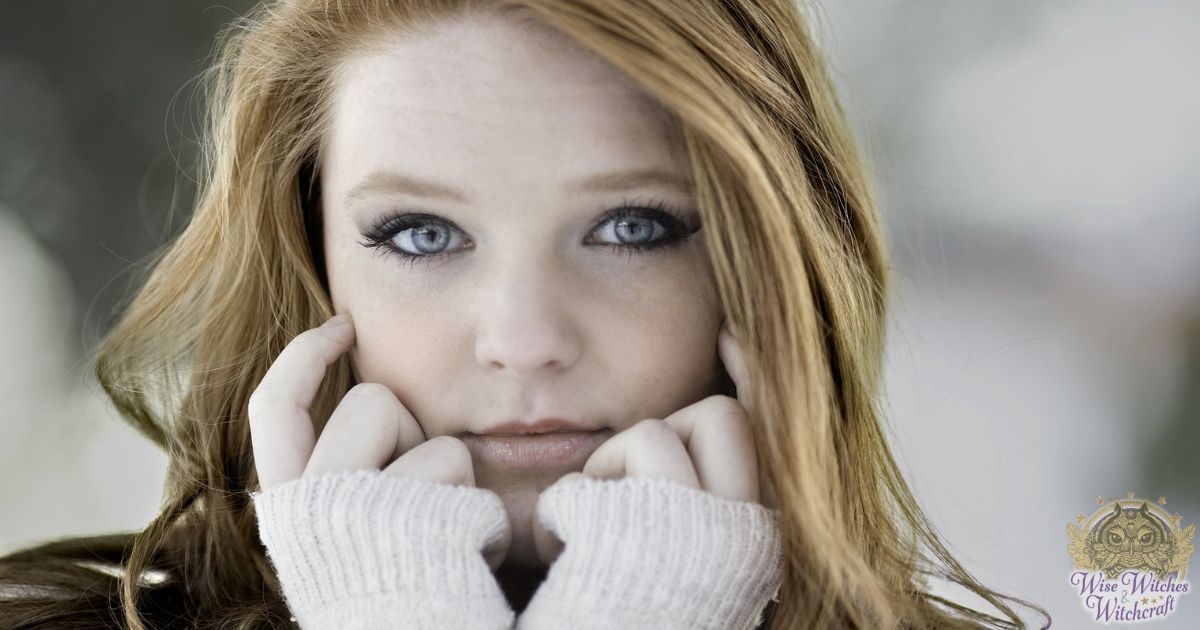
One of the aspects of Yule that makes it so special is that our personal and magical traditions are reflected in every part of the holiday. Look to your family, friends, and covenmates for those ”reasons for the season.” Enjoy!

